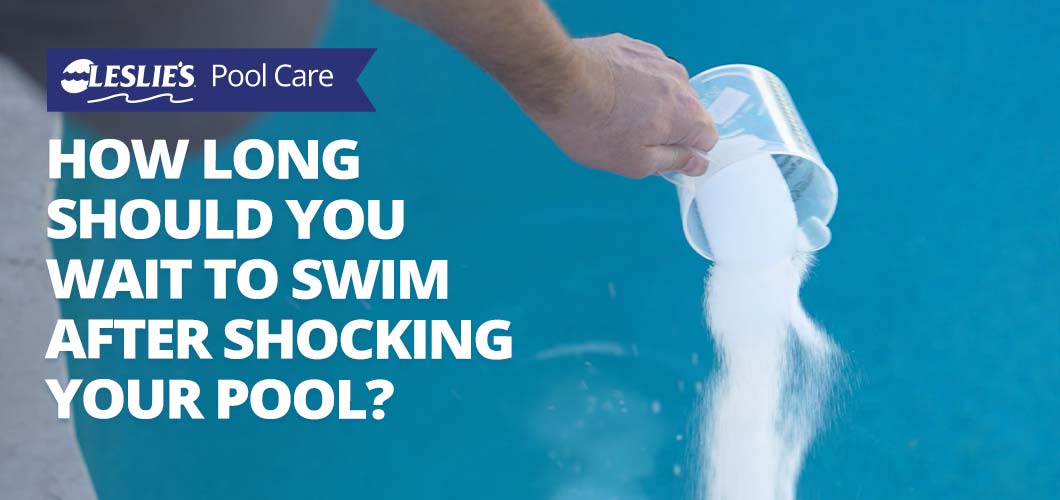Shocking a pool is an essential part of pool maintenance that involves adding a high dose of chlorine to kill bacteria, algae, and other contaminants. It helps to keep the pool water clean, clear, and safe for swimming. However, many pool owners often wonder how soon they can jump back into the water after shocking their pool. Let’s dive into the details!
Factors to Consider
Several factors determine how soon you can swim after shocking your pool:
- The type of shock treatment used
- The level of chlorine added
- The size of your pool
- The filtration system and circulation of water

Credit: lesliespool.com
Type of Shock Treatment
There are different types of pool shock treatments available, such as calcium hypochlorite, sodium dichlor, and potassium monopersulfate. Each type has different concentrations and compositions, which can affect the waiting time before swimming.
Chlorine Levels
The level of chlorine added during the shock treatment is crucial. It is recommended to wait until the chlorine levels return to a safe range before swimming. This typically takes a few hours to a day, depending on the initial chlorine levels and the amount added during shocking.
Credit: intheswim.com
Pool Size
The size of your pool plays a role in how quickly the shock treatment disperses and the chlorine levels normalize. Larger pools may require more time for the shock treatment to circulate effectively throughout the water.
Filtration System and Circulation
Having a well-functioning filtration system and proper water circulation can help speed up the process of chlorine distribution and dissipation. Good circulation ensures that the shock treatment reaches all areas of the pool, making it safe for swimming sooner.
Waiting Period
As a general guideline, it is recommended to wait at least 8-24 hours after shocking your pool before swimming. This allows the chlorine levels to drop to a safe range and ensures that the water is free from any harmful contaminants.
Testing the Water
Before taking a dip after shocking your pool, it is essential to test the water to ensure that the chlorine levels are within the recommended range for safe swimming. You can use a pool water testing kit to check the chlorine levels and pH balance before entering the pool.
Precautions to Take
While waiting to swim after shocking your pool, here are some precautions to keep in mind:
- Avoid entering the pool if the chlorine levels are still high
- Keep children and pets away from the pool during the waiting period
- Ensure proper ventilation to allow the chlorine to dissipate
- Follow the manufacturer’s instructions on the shock treatment product
Conclusion
Shocking your pool is a necessary step to maintain clean and safe swimming water. By considering factors such as the type of shock treatment, chlorine levels, pool size, and circulation, you can determine how soon you can swim after shocking your pool. Remember to test the water before diving in and take necessary precautions to ensure a safe swimming experience.





